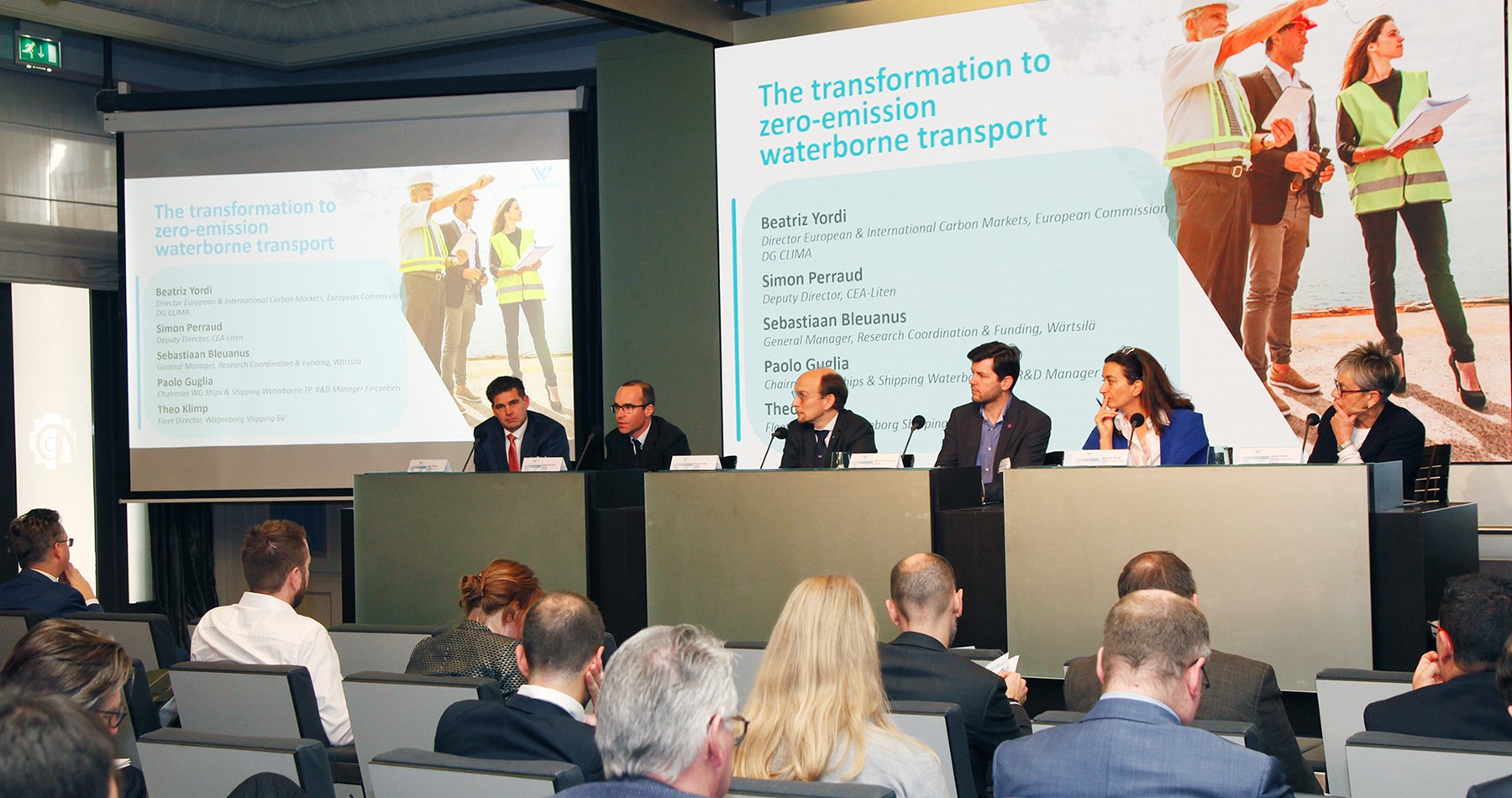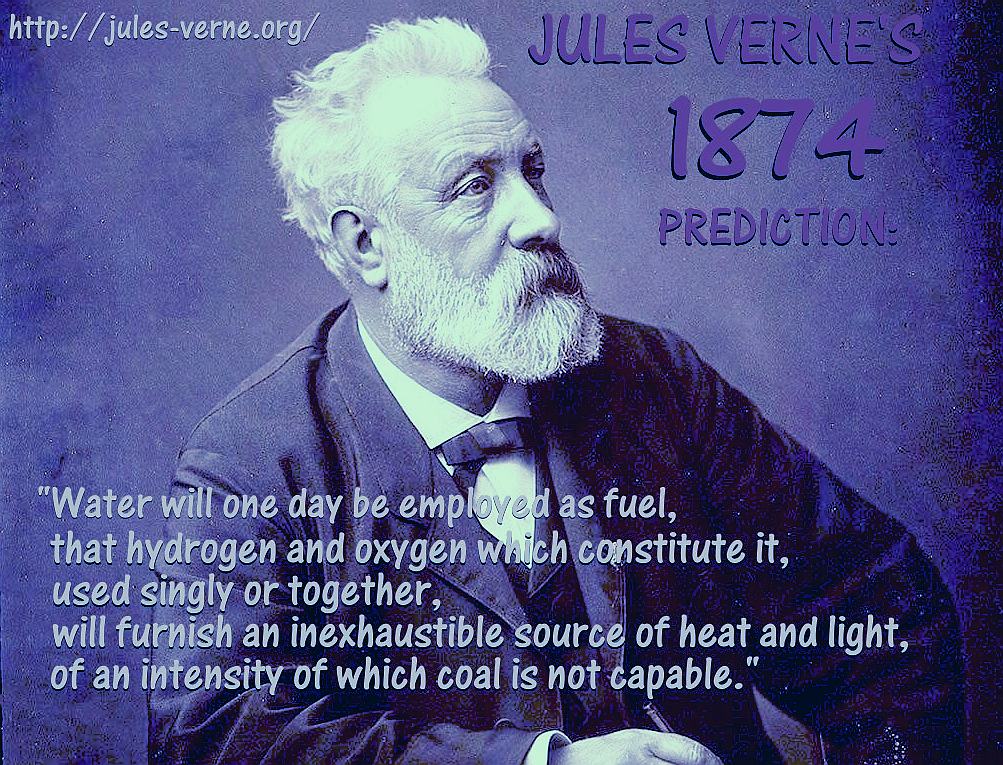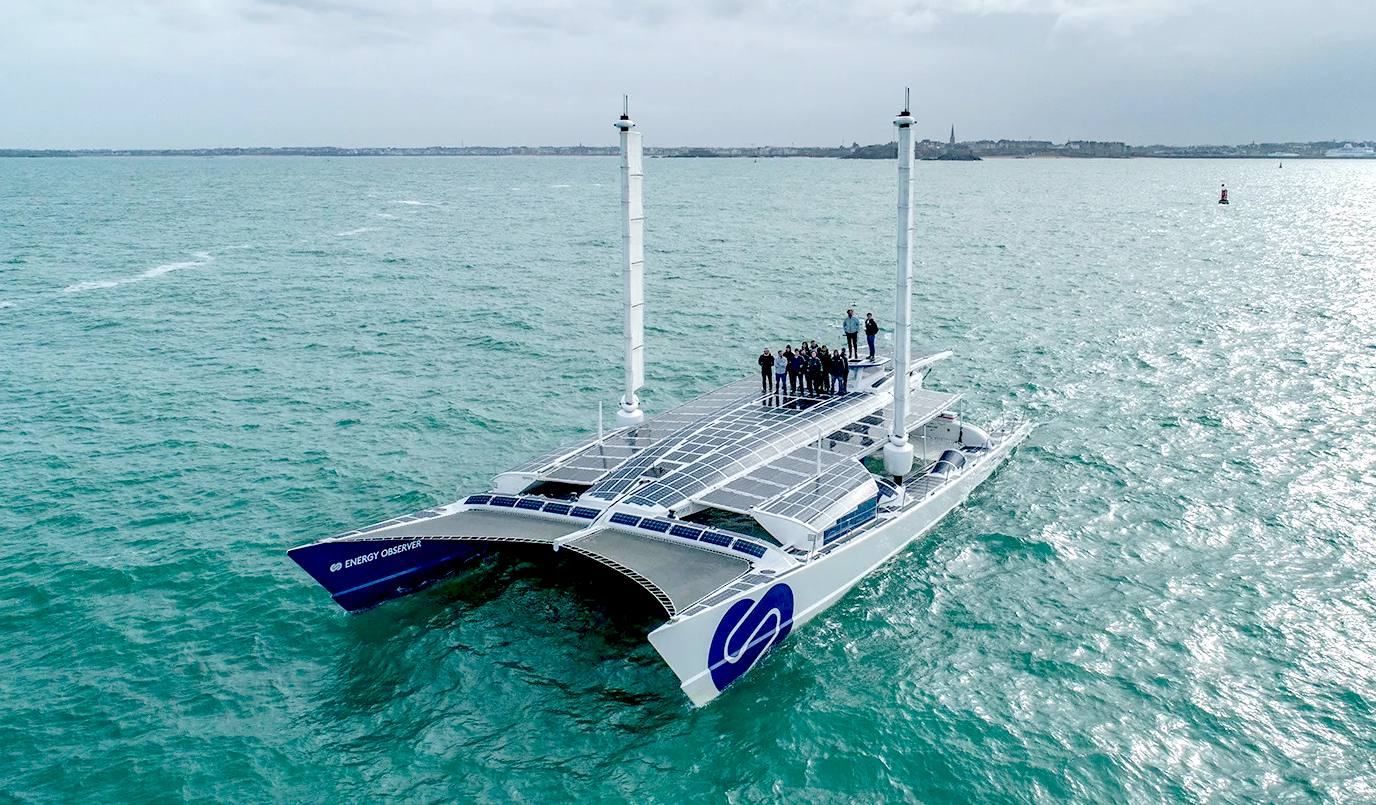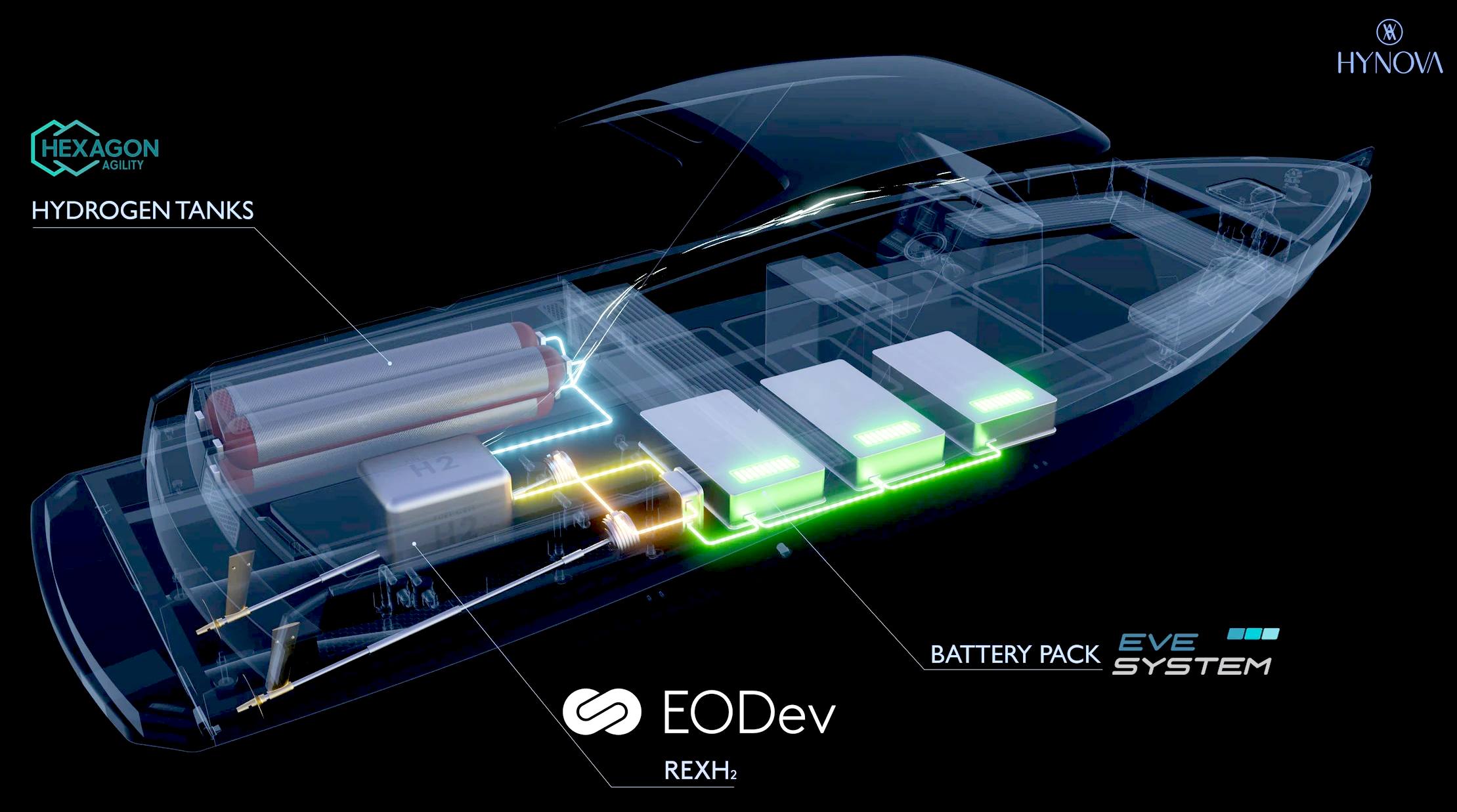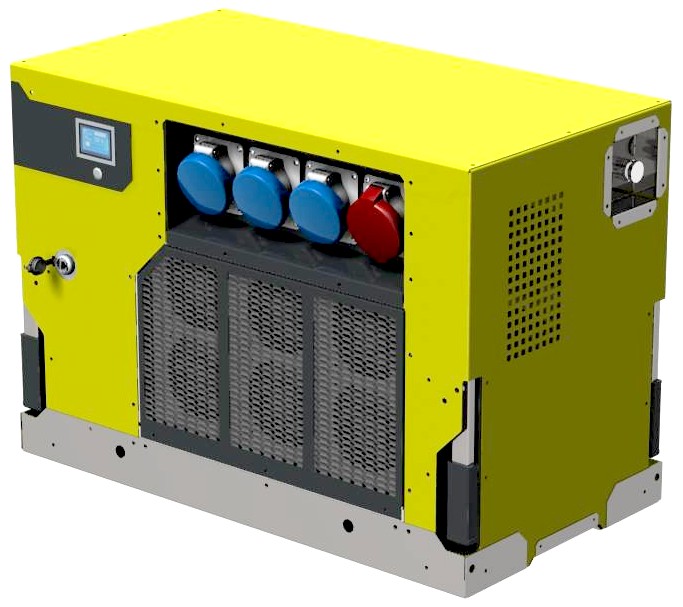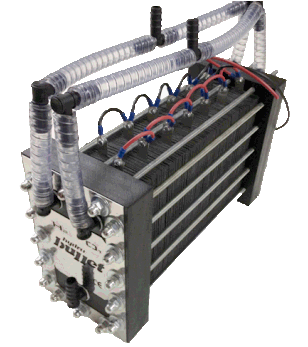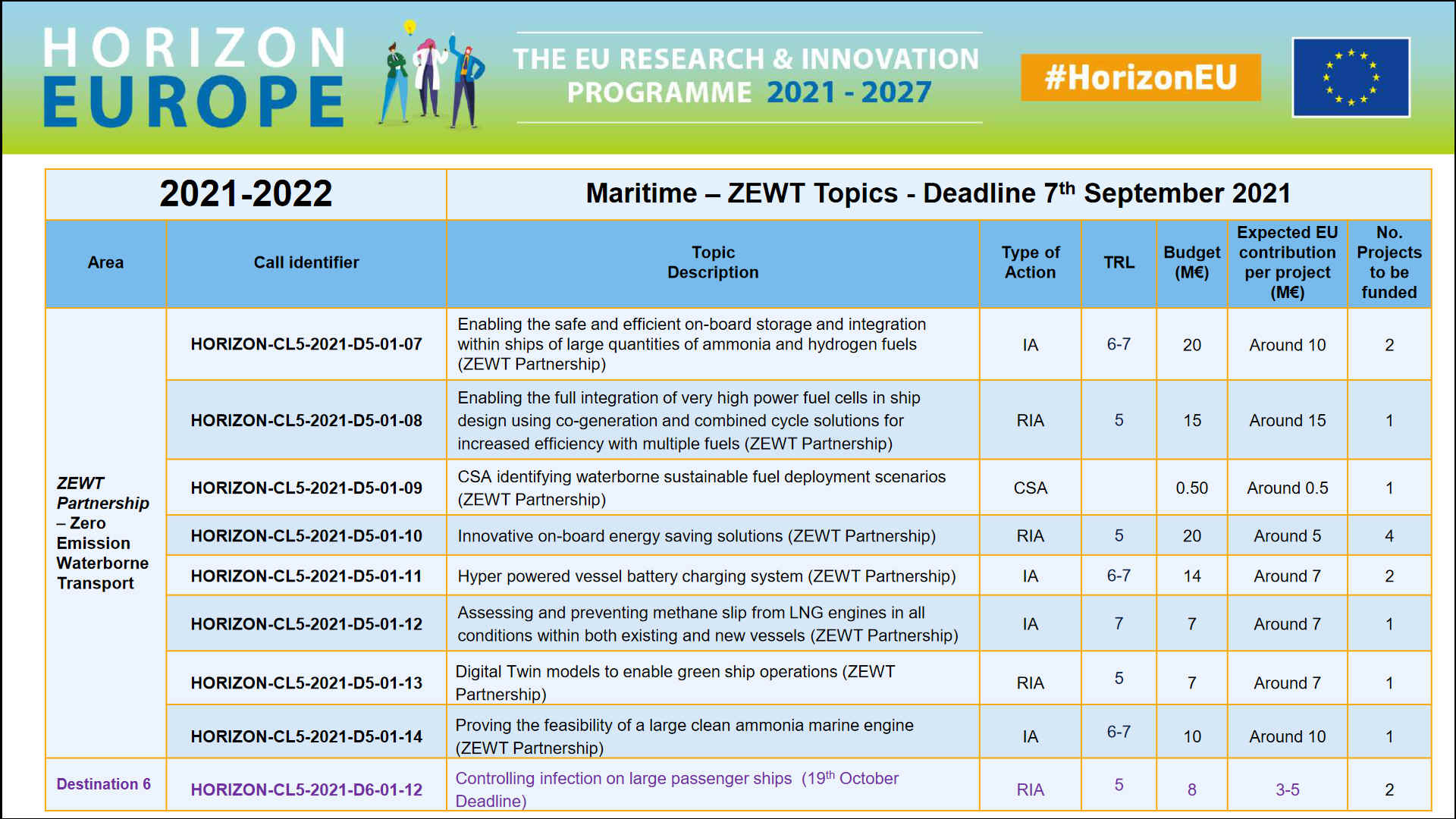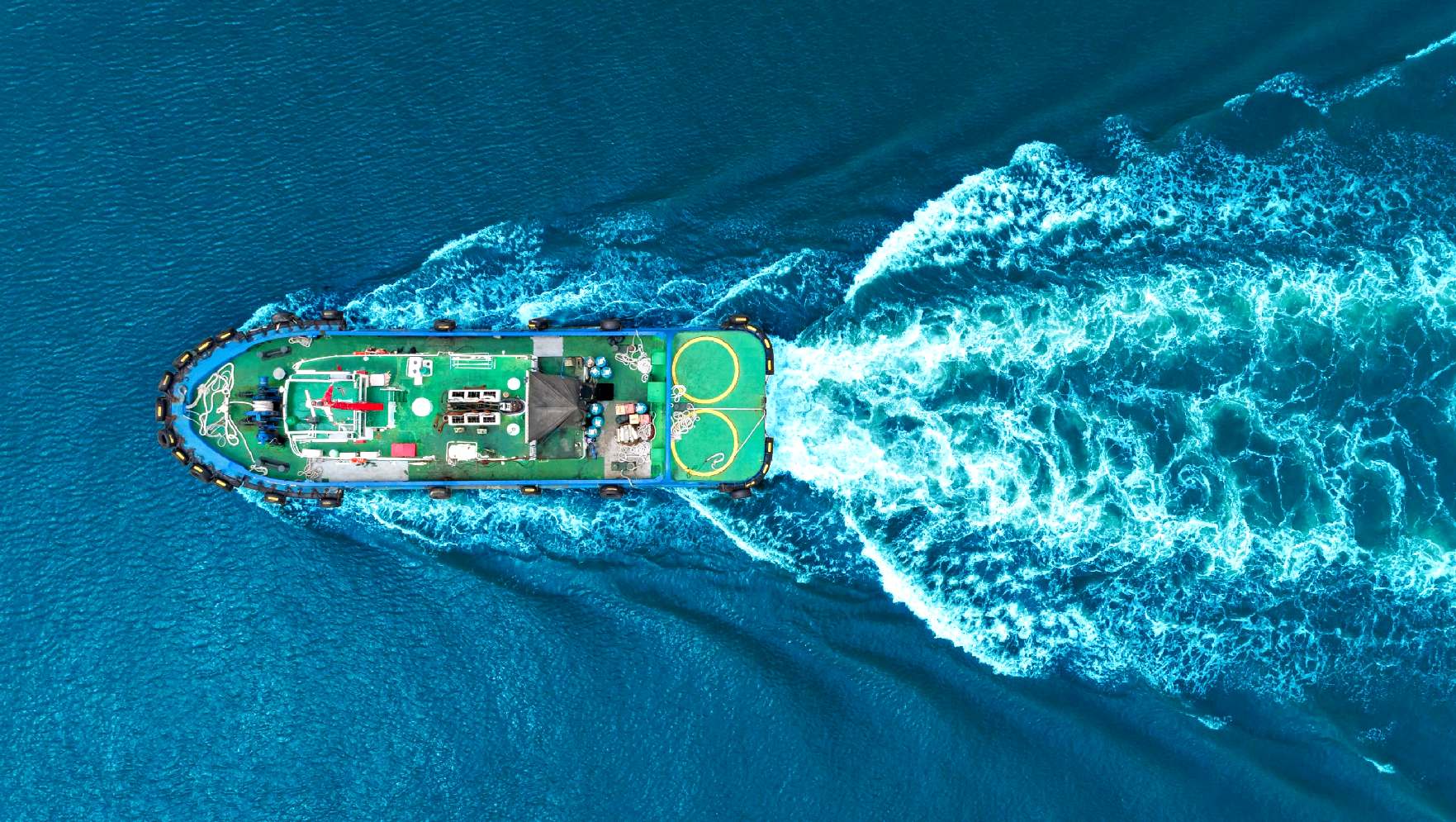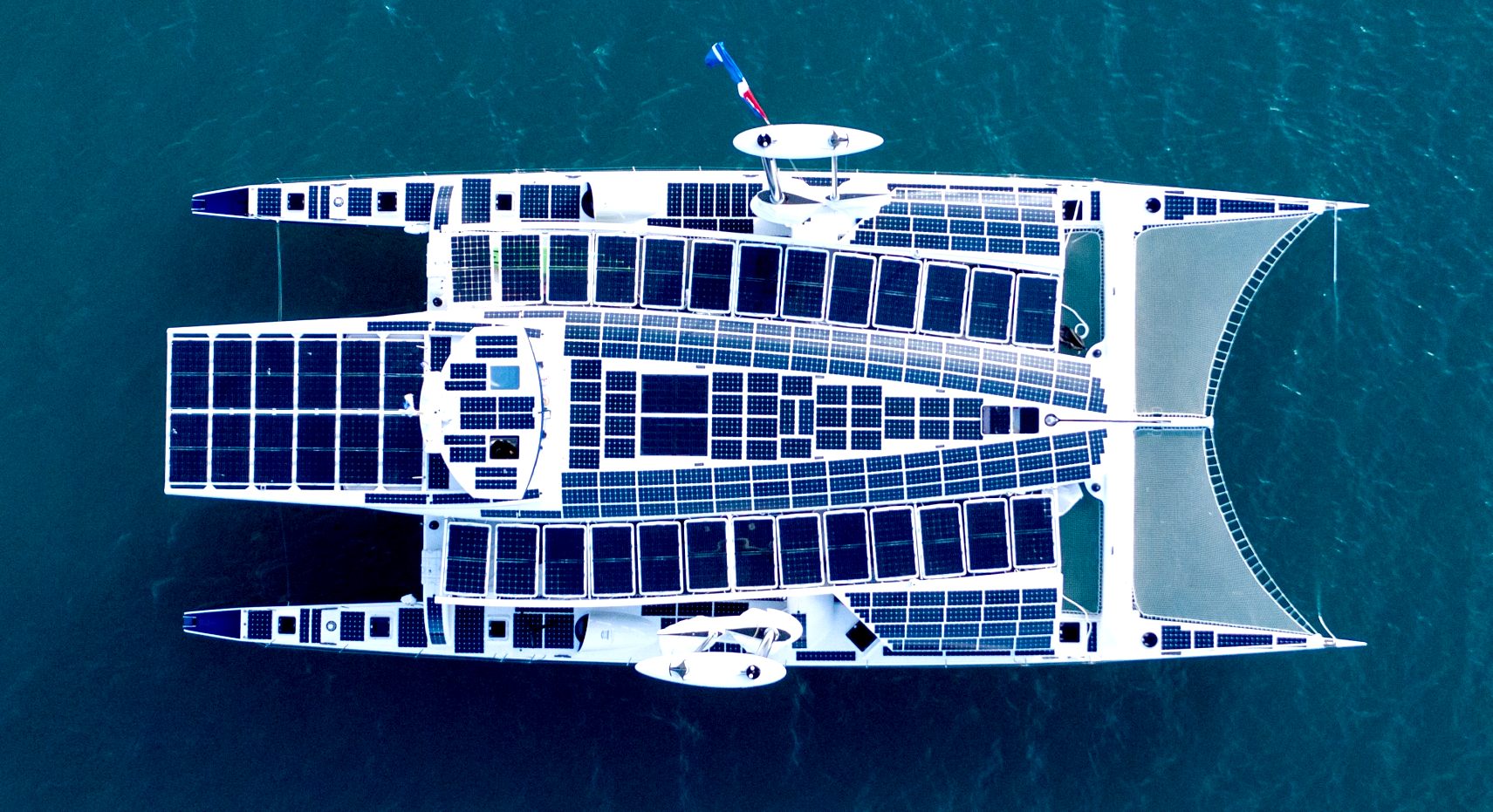|
ZEWT - ZERO EMISSION WATERBORNE TRANSPORT
CLIMATE | CONTACTS | ELECTRICITY | FUEL CELLS | HYDROGEN | PLASTICS
Please use our SITE INDEX to navigate this site or return HOME
|
|||||||||||||||||||||||||||||||||||||||||||||||||||||||||||||||||||||||||||||||||||||||||||||||||||||||||||||||||||||||||||||||||||||||||||||||||
|
ZEWT - ZERO EMISSION WATERBORNE TRANSPORT
Zero Emission Waterborne Transport (ZEWT) is a European Commission Partnership under the Horizon Europe grant funding scheme, designed to hasten and procure the introduction of clean ships, operating on renewable energy supplies, as per the IMO's MARPOL agenda to clean up our oceans.
Under the ZEWT scheme, the EU is exploring many alternatives to diesel bunkering, such as hydrogen and ammonia for use in Internal Combustion Engines (despite the inefficiencies) and as a hydrogen energy carrier for fuel cells to convert to electricity. The reason for this dogged approach, we suppose, is to try and extend the use of the dirty ships operating at present, rather than implement a scrappage scheme as proposed in 2019 by the Cleaner Ocean Foundation, with the IMO revealing that they do not (normally) entertain solutions by anyone they choose not to recognize. And there we were thinking that Articles 9 and 10 were sacrosanct. Presumably, some organizations are not answerable to the thinking electorate as well as they might. But it might pay to keep an open mind.
We can appreciate that stakeholders may be calling the shots to some extent, perhaps to extend the use of rust-buckets that should have been retired years ago, but we are in a global climate crisis, with humanity being burned at the stake, and can ill afford conjecture. Granted, ships worth converting to clean fuels, should be converted, and scrubbers fitted to others where that is practical, for as long as the IMO's targets are being met. No reasonable zero carbon stone should be left unturned, all the while avoiding procrastination in obstinacy.
THE CORN EXCHANGE, BRIGHTON DOME - Leo Perrin is the Youth Project Lead at the Cleaner Ocean Foundation - a not for profit R&D organisation. This is an amateur video of a short presentation given on the 13th of June 2024 about the 'green hydrogen' powered Elizabeth Swann - a zero carbon trimaran around 44 meters in length. Bristling with state of the art tech. This talk (only his second) was given at the launch of the 'Sussex Bay' re-wilding project, a brilliant initiative to conserve around 100 miles of Sussex coastline, supported by many authorities and like minded concerns. Please visit their website to learn more of this important work.
The one notable absence from the EU's waterborne agenda is solar power. Too (Dutch Boy) presumably. Thankfully, fuel cells are getting good billing, but why ignore a simple solution? Wind power as another recognized form of assistance is commonplace and practical as a conversion for some existing vessels with computer controlled wing-sails, gaining 5-10 fuel savings.
The only real difference between fuel cells for cars and trucks, and fuel cells for boats and ships, is size - hence scale. FC's for trucks might equate to that for boats, being a similar size. But cargo, cruise and ferry operations will require considerable up-scaling of the machinery to drive a vessel. Likewise, the energy storage capacity. Then of course there is the logistics problem, of getting green hydrogen to ports and harbours, from the onshore solar farms, and offshore wind farms. At the moment there is almost no hydrogen bunkering at ports, save for facilities being arranged by hydrogen vessel owners, to service their needs. The lack of infrastructure and preparedness demonstrates a marked lack of forward planning in our view. But then we are told that our opinion does not count - and that means your view is worth nothing, despite your tax dollars footing the bill. Even where it is your houses burning, and your cellars being flooded. Imagine how the affected islanders feel as anthropogenic sea level rise makes them homeless.
We hope that in speaking our mind on occasion, we will not engender prejudice. Constructive criticism may help shorten debates and concentrate focus. That is why opposition parties exist in politics, in a democratic society.
There are a number of ship projects proposing hydrogen as the fuel for large PEM cells. Plus of course ammonia as a concentrated energy store that is reasonably safe to handle, but poses production problems and losses. These are all promising technologies, with ammonia fuel cells having membrane problems to over come. We'd suggest concentrating on the technologies with near-to solutions, to get that in the pipeline, while funding promising research in tandem, but not so as to starve, dissuade or otherwise add to the confusion that may be stalling clean tech implementation. Obfuscation is the enemy of progress.
|
|||||||||||||||||||||||||||||||||||||||||||||||||||||||||||||||||||||||||||||||||||||||||||||||||||||||||||||||||||||||||||||||||||||||||||||||||
|
THE CLIMATE CLOCK IS TICKING FASTER THAN EXPECTED - In the race to cool the planet, the solar and wind powered 'Elizabeth Swann' will feature solar collectors and wind energy harvesting apparatus in an advanced configuration. The hull design of this vessel is ideal for bulk storage of hydrogen as an energy bank for long distance cruising. The system may be scaled up for ferries, as the logical, next, evolutionary step. This vessel is nearing the construction phase, now with a confirmed shipbuilder who will work in 5083 alloy and other materials as appropriate. Other suppliers are needed to complete the clean-tech line up, such as batteries, fuel cells and solar panels. Once partnered on these areas, we might proceed.
|
|||||||||||||||||||||||||||||||||||||||||||||||||||||||||||||||||||||||||||||||||||||||||||||||||||||||||||||||||||||||||||||||||||||||||||||||||
|
CLEANER OCEAN FOUNDATION'S SOLUTION
The Elizabeth Swann has a unique trimaran configuration that lends itself to the storage of considerable quantities of hydrogen as a gas or a liquid. As a gas, the hull-form provides sufficient storage to cross that Atlantic on one fill up of 24 special (integrated) cylinders, to give an approximate range of 4,000nm, in one configuration. The vessel has large solar wing and deck areas, and sports a wind turbine generator, the combination able to drive the yacht directly, with a battery store for bursts of speed. All of which helps endurance and swift passages.
In another configuration, using liquid hydrogen, the Swann might complete a circumnavigation, without using solar panels, and all on one fill-up of special cryogenic tanks. The yacht has been designed so that the fuel tanks are a bolt on feature, allowing changes to specification, depending on customers requirements.
Using liquid hydrogen and solar power in tandem, calculations reveal that the Swann might travel Around the World in 80 Days, to equal the record set by Philleas Fogg in Jules Verne's classic adventure.
Rather than view batteries and hydrogen as opposing technologies, they can be energy storage allies and complementary know-how, to cope with solar and wind powered intermittencies in the first instance. Though this might actually reduce range potential and performance if not correctly managed as a range extender.
In 1874, Jules Verne set out a prescient vision that has inspired governments and entrepreneurs in the 147 years since. In his book The Mysterious Island, he wrote of a world where:
"Water will one day be employed as fuel, that hydrogen and oxygen which constitute it, used singly or together, will furnish an inexhaustible source of heat and light, of an intensity of which coal is not capable."
The idea came about as a result of looking at hydrogen range extenders for battery vans and trucks. With these vehicles it is possible to bolt on a hydrogen battery cartridge. That is not the case with the Elizabeth Swann, where such cartridges are designed to be swapped at SmartNet™ service stations, for extremely rapid and safe energy exchanges.
Hence, that idea was a non-starter. But then the Swann is likely to be moored in a harbour for longer periods between voyages, it is then probable that the onboard lithium batteries will be fully charged quite quickly (depending on capacity), leaving energy that could be harvested from nature, with nowhere to go. After that time, any energy generated by the wind turbine or solar panels will be wasted unless we can store it onboard effectively, as a reserve for use at sea.
Instead of using commercially available Type IV storage cylinders, we are considering modifications to the hull to allow us to use stored hydrogen more efficiently than, for example, Energy Observer, and the New Era seen below - both worthy projects, incorporating leading edge technology, as an inspiration to us at the Foundation.
The green hydrogen generated at anchor, would go to improving vessel performance when a ship is back at sea again. Ideal as a reserve, or for short hop vessels, to increase performance. It is cleaner than using a diesel backup generator, as on the IBM Mayflower trimaran.
The special tanks may hold sufficient volumes of hydrogen for trans-Atlantic or even trans-Pacific voyages.
In the short term, and most immediately, this may mean extremely fast crossing of the English Channel for the Elizabeth Swann. But for larger craft designed along the same principles, and scaled up, it could mean cargo and passenger ships being powered by sustainable hydrogen, with a mix of solar and wind energy harvesting from nature, by way of a helping hand.
HYDROGEN LIQUID & GAS PROJECTS A - Z
2000 - The 22-person Hydra ship was demonstrated.
2003 - Duffy-Herreshoff watertaxi went into service.
2003 - Saw the debut of Yacht No. 1, and Hydroxy3000.
2004 - The AUV DeepC, and Yacht XV 1 were shown.
2005 - The Type 212 fuel cells submarine went into service with the German navy.
2006 - The 12-person Xperiance was debuted, as well as the Zebotec.
2007 - The 8-person Tuckerboot and the Canal boat Ross Barlow debuted.
2008 - The 100-passenger Zemships project FCS Alsterwasser went into service in Hamburg.
2009 - The Nemo H2 and the Frauscher 600 Riviera HP went into service.
2013
- The Hydrogenesis Passenger Ferry project went into service. 2018 - HySeas III project, for the Orkney Islands: to build the world’s first sea-going car and passenger ferry fuelled by hydrogen fuel cell propulsion, secured EU funding, aiming for 2021, led by Ferguson Marine Engineering Ltd and St. Andrews University.
2018 - Jules Verne 2, hydrogen-powered passenger riverboat, running on fuel cells supply, with a hydrogen station temporarily installed in Port Boyer fueled byAir Liquide.
2021 - The Kawasaki New Sunshine Project, Suiso Frontier, received classification Approval in Principle in August.
2021 - The liquid hydrogen powered car ferry MF Hydra was delivered to Norled in April.
2023 - Fjord cruise ship Havilla, Havyard, NES, LH2 fuel cell & battery powered liner is under development.
You may care to conclude from the above, that we are well and truly on the way. At least that is how it appears to us, as advocates of hydrogen, so long as it is deployed safely. Hopefully, with statute on its way to help Port authorities decide to engage proactively, rather than retrospectively. Of course, many already are. Bully for them!
ENERGY OBSERVER - She started out with 21kW of solar panels, seen here with 34kW of sun packing power, but still has a power to hull displacement ratio of 1.14 kW/ton. That is an improvement on PlanetSolar's 1.05kW/ton, but nowhere near the 3kW/ton of the Elizabeth Swann. Oddly enough, PlanetSolar managed a higher average speed across the Atlantic, over the Observer. Suggesting that the energy conversion chain of the French yacht, is not as efficient as the large Swiss boat. Not wanting to be greedy, but we think we can improve on both of these magnificent achievements. For that is what they are; trail-blazing pioneers.
ENERGY OBSERVER - SUN, WIND & HYDROPOWER
Another vessel that is presently developing this theme as a range extending energy-storage solution, is the Energy Observer, a vessel that has an on board hydrolyzer, compressor and high pressure storage tanks that feed gas into a fuel cell, to make electricity for the electric motors. In 2020 Energy Observer crossed the Atlantic at an average of 4.4 knots, somewhat slower than PlanetSolar's 5.3 knots, but they are constantly experimenting and improving their technology, staying with the same GRP hulls. As the ENZA, skipered by Peter Blake and Robin Knox-Johnson, the catamaran took the Jules Verne Trophée in 1994.
The Energy Observer is using Toyota's REXH2 fuel cell - compressor – inverter set, boasting a maximum power of 60 kW, operated at around 50% of its potential to optimize its output. The problem being, that the hydrogen conversion chain is working against all of us, if generation is onboard, compared to battery storage alone. We have our fingers crossed for the crew of the Observer that we may we all learn together, building on each other's achievements.
HYNOVA, NEW ERA - You cannot get around battery or fuel cell mass (at the moment), but the space and weight of the hydrogen cylinders seen in the picture above, can be avoided if the hull is used to advantage. Unfortunately, most conventional designs are not adaptable, hence, ship hulls that are proposed as suitable for hydrogen power, by the majority of naval architects, may not benefit from the proposed hydrogen range extending innovation.
Electro-hydrogen hybridization is at the heart of the propulsion system of The New Era by HYNOVA Yachts, the first day-boat equipped with a REXH2® running on hydrogen and currently in approval phase. This is the brainchild of Frédéric Ménière, President of EVE System, Chloé Zaied, Managing Director of HYNOVA Yachts, and Romain Jallon, Director of Operations at EODev.
|
|||||||||||||||||||||||||||||||||||||||||||||||||||||||||||||||||||||||||||||||||||||||||||||||||||||||||||||||||||||||||||||||||||||||||||||||||
|
HYNOVA YACHTS - NEW ERA
On their 'New Era' vessel, hydrogen is stored in carbon fiber tanks, under pressure (350 bars). The advantages compared to the other options are the same as found on board the Energy Observer boat: zero emissions (no CO2 or fine particles), silent, and greater density of power and energy than with an "all-battery" solution.
According to Hynova, the fuel cell provides the average power required to propel the ship, and the batteries will provide the peaks of power. This allows for intermittent power to the propellers of 300kW with a fuel cell of 60kW. The overall efficiency is improved because the battery thus operates at its optimum.
The hydrogen hybrid solution makes it possible, like a PHEV (Plugin Hybrid Electric Vehicle), to perform short services 100% electric on battery, and longer services, such as Cross Channel Ferries, with the energy supply of hydrogen.
The fuel cell and the batteries are connected in parallel to the voltage network supplying the motors. The Fuel Cell can only supply power, while the battery can supply power to motors or receive power from the Fuel Cell. The role of the batteries is to respond to calls for power from the motors, and to provide additional power to achieve maximum speed. The relatively short demands for speed are provided by the two sources together. Sizing the fuel cell to maximum power improves the compactness of the propulsion chain. A hybridization management algorithm optimizes the operation of the whole system.
On The New Era, they employ 250kW in battery power and 132kWh in energy storage. The battery is sized with respect to the average power required for the operation of the vessel.
Their battery packs were designed by Eve Systems, using Lithium-Iron-Phosphate technology. This offers lower energy density than Lithium NMC technology used in cars, but is more liable to thermal runaways leading to battery fires that cannot be extinguished. In discussions with Bureau Veritas on the certification of a hydrogen vessel, they advised Hynova against the use of NMC batteries, which they do not yet certify.
Design is a compromise. Automobile OEMs use NCA (Tesla) and NMC (all others). In heavy industries, and especially in boats, LTO and LFP are used for safety. LFP for energy density. LTO is for heavy usage, fast charging, but limited use - expensive and weighty. Hynova, use LFP, as per electric/hybrid work boats that sail in France. It's a reasonable solution to combine safety, performance and durability. Ref: Romain Jallon, Frédéric Ménière, and Chloé Zaied.
GENERATING HYDROGEN - Mobile hydrolyzer and fuel cell electricity generators in combination with onboard hydrogen storage, could be a range extending option for short and medium range vessels, such as ferries. The proposed combination could considerably reduce battery mass and cost for new vessels, as identified by Hynova and others.
It remains to be seen if there will be any real performance gains from such innovation and inclusion, after all the losses have been taken into consideration, even with the near elimination of losses in the compression stage used in the Energy Observer. All to be balanced against the additional displacement that the Foundation seeks to avoid. Unfortunately, hydrogen containment cylinders are heavy and large. Of necessity, the gas and liquid fuels should be handled with care.
HORIZON EUROPE - These are the ZEWT call topics for 2021-2022 under Cluster 5. Cluster 6 calls border on the same topics and are supportive of similar aims. There are also other clean air calls from Horizon Europe, but the form filling is staggering. And if you do not have contacts built up over many years, plus a trading track record to match, the Commission will not fund you. They are risk adverse in buckets.
In the case of the Elizabeth Swann, typically, she would make her own hydrogen while at anchor and docked, with an onboard capacity of 42 kilograms as standard, as a part of a range extending hull combination. Then there is the LH2 module, that may only be fitted as classification rules are firmed up, and unified, to make compliance easier for developers. Some Flag States may be more amenable to innovation, yet still enforce standards.
In the case of larger vessels considering using hydrogen fuel cells in similar fashion, they will most likely be refuelled from shore based stations at ports with that facility. At least, those are the proposals. The Swann may of course fill with hydrogen while docked if an advantage. As a luxury zero emission yacht, the future is looking bright, for those who enjoy cruising and want the convenience of electric motors, rather than sails.
For use as a ferry, the hybrid formula we are suggesting, we believe, has considerable potential, that is yet to be explored, as a ZEWT, or any other zero emission project.
A-Z
INDEX OF H2 POWERED FUEL CELL
SHIPS
FERRY OPERATORS & ISLAND SERVICES
DFDS -
LIST
OF JULES VERNE (SAILING) TROPHY HOLDERS:
LIST OF ATTEMPTS:
2021
- Charles
Caudrelier / Gitana Team 1st attempt - Maxi Edmond
de Rothschild & Franck Cammas
HORIZON MARITIME - ZERO EMISSION WATERBORNE TRANSPORT CALLS
Horizon Europe is the EU's next research and innovation programme starting in 2021, with the Green Deal.
HORIZON-CL5-2021-D5-01-07
Enabling the safe and efficient on-board storage and integration within
ships of large quantities of ammonia
and hydrogen
fuels (ZEWT Partnership) IA to TRL 6-7 Budget € 20m Around €10m
x 2 projects
|
|||||||||||||||||||||||||||||||||||||||||||||||||||||||||||||||||||||||||||||||||||||||||||||||||||||||||||||||||||||||||||||||||||||||||||||||||
|
Please use our SITE INDEX to navigate this site or return HOME
This website is provided on a free basis to promote zero emission transport Internationally. Copyright © Climate Change Trust & Cleaner Ocean Foundation 2024. Solar Studios, BN271RF, United Kingdom.
|
